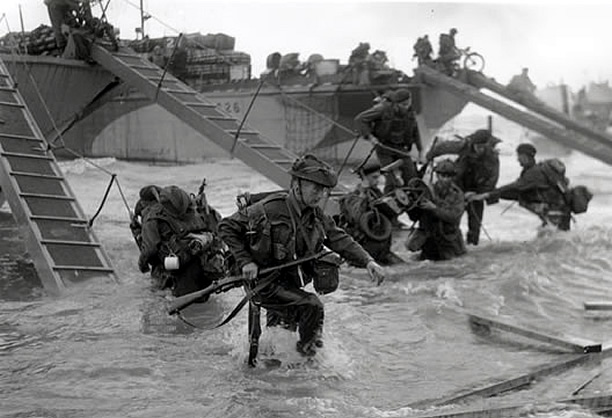
On 6 June 1944 a huge military machine embarked on the invasion of German-occupied France. Its target was the coast of Normandy. A vast armada of ships carried more than 130,000 men. Ahead of them, planes and gliders transported another 23,000. This was the biggest amphibious landing in history, and its aim was to end the war in Europe and bring victory to the Allies.
Over the following months, further troops landed to help regain German-held territory; their number grew to more than two million.
While no New Zealand military units landed on the beaches of Normandy, individual New Zealanders did. Brigadier James Hargest, New Zealand’s official observer with the Allied forces, went ashore with the British 50th Division on D-Day, and radar specialist Ned Hitchcock landed amidst the carnage on Omaha Beach the following day. Other New Zealanders like Jack Ingham were on the ships and planes that carried troops to France on 6 June – D-Day – and in the months that followed. These young men served with the Royal Air Force (RAF), Royal Navy (RN) or Merchant Navy. Some were in charge of landing craft, vessels that carried troops and tanks to the invasion. Others were seamen or officers on battleships, destroyers or hospital ships.
New Zealanders in the RAF were among the crews of Dakotas and gliders, which carried airborne troops. Other New Zealanders flew in fighters and bombers, sent out on operations in support of the landings. Far from home, these men were witnesses to one of the decisive events in the Second World War.
